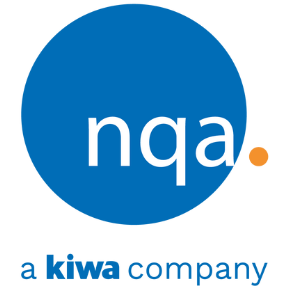A Guide to Implementing PAS 2060
Welcome to the forefront of sustainable business practices with the PAS 2060:2014 Implementation Guide—an indispensable resource in the journey towards carbon neutrality. In today's world, environmental stewardship is no longer an option but a necessity. This guide, designed to assist organisations in achieving and maintaining carbon neutrality, is your definitive roadmap.
Join us as we delve into the key components of the PAS 2060 Implementation Guide, ensuring that your commitment to sustainability not only meets but exceeds expectations.
Why PAS 2060 matters
PAS 2060 is crucial due to its rigorous framework for organisations aiming to showcase their dedication to carbon neutrality.
In an era increasingly defined by climate consciousness, adherence to this standard not only fosters transparency and credibility but also drives tangible reductions in greenhouse gas emissions. It aligns businesses with global sustainability goals while empowering them to lead by example in combating climate change.
A brief history of PAS 2060
Initially developed in 2009 and launched in April 2010, PAS 2060 has evolved through subsequent updates, incorporating feedback and advancements in greenhouse gas emissions understanding. Today, PAS 2060:2014 remains the leading standard for demonstrating and committing to carbon neutrality.
Benefits of implementing PAS 2060
Implementing PAS 2060 offers several advantages for organisations committed to carbon neutrality and sustainability, such as:
-
Cost efficiency: carbon data analysis helps operate more efficiently therefore decrease costs.
-
Competitive edge: position your organisation ahead by aligning with future carbon regulations.
-
Compliance: meet regulatory and supply chain requirements with strong carbon reporting and reduction strategies.
-
Credibility: enhance reputation with third-party verification to internationally recognised standards, showcasing genuine sustainability commitment.
-
Stakeholder engagement: improve relations by demonstrating transparent and credible efforts towards carbon neutrality.
Implementing PAS 2060 not only ensures compliance and credibility but also fosters a culture of sustainability that resonates positively with stakeholders and the wider community.
What is inside the PAS 2060 Implementation Guide?
The PDF guide for implementing PAS 2060 is valuable for organisations seeking certification. Here's an overview of its key sections:
General – clauses 1-3
This section serves as the foundationton the PAS 2060 Implementation Guide. It defines the scope, outlines key references, and clarifies essential terms and definitions. This initial understanding is crucial for navigating subsequent sections effectively and implementing the standard efficiently.
Step 1,2,3 and 4 – clauses 4-11
It is at this stage that the Implementation Guide breaks down into a step-by-step process. Steps 1 to 4 form a comprehensive process overview and offer an overview of clauses 4 to 11.
Step 1 begins with measuring your carbon footprint, ensuring thorough justification and compliance with the PAS 2060 standard.
Step 2 focuses on reducing emissions through clear goals and a Carbon Footprint Management Plan (clauses 7-8).
Step 3 involves offsetting residual emissions using verified carbon offset credits, as outlined in clause 9.
Step 4 centres around documentation and verification preparation, requiring the creation of a Qualifying Explanatory Statement (QES) to declare commitment or achievement of carbon neutrality (clause 10).
Together, these steps provide a structured approach to understanding implementation of the emission measurement, reduction strategies, offsetting practices, and compliance documentation effectively.
Necessary documentation
The standard offers clear guidance on the required documentation for the implementation/certification process. This section provides a comprehensive overview of all documentation necessary to successfully navigate through this procedure, which is highly beneficial for ensuring thorough compliance and efficient workflow.
Get the most from PAS 2060
Here you will find 11 top tips to maximise compliance and verification efforts under PAS 2060. It serves as a crucial resource, offering practical guidance to align sustainability goals with business strategy, secure leadership commitment, and engage the entire organisation in achieving carbon neutrality.
See the examples below, and for a deeper dive into these strategies and more, explore the full guide.
Annex 1 – QES readiness checklist
An integral part of the Implementation Guide, Annex 1 – QES Readiness Checklist, comprises 38 questions designed to assist in declaring commitment to and achieving carbon neutrality.
By leveraging this checklist, organisations can systematically assess their readiness, improve their performance, and align their operations with global sustainability standards effectively.
NQA's Final Thoughts
Our Implementation Guide equips organisations with essential tools to navigate the path towards carbon neutrality effectively. It offers practical insights and a structured approach to compliance and verification under PAS 2060, ensuring alignment with strategic objectives and supporting sustainability practices.
Download the full ISO 27001:2022 Implementation Guide here.
![]() Fancy learning more about PAS 2060? Explore our latest training!
Fancy learning more about PAS 2060? Explore our latest training!
![]() Ready to embark on your journey towards sustainability? Contact our friendly sales team to find out how we can support you.
Ready to embark on your journey towards sustainability? Contact our friendly sales team to find out how we can support you.

